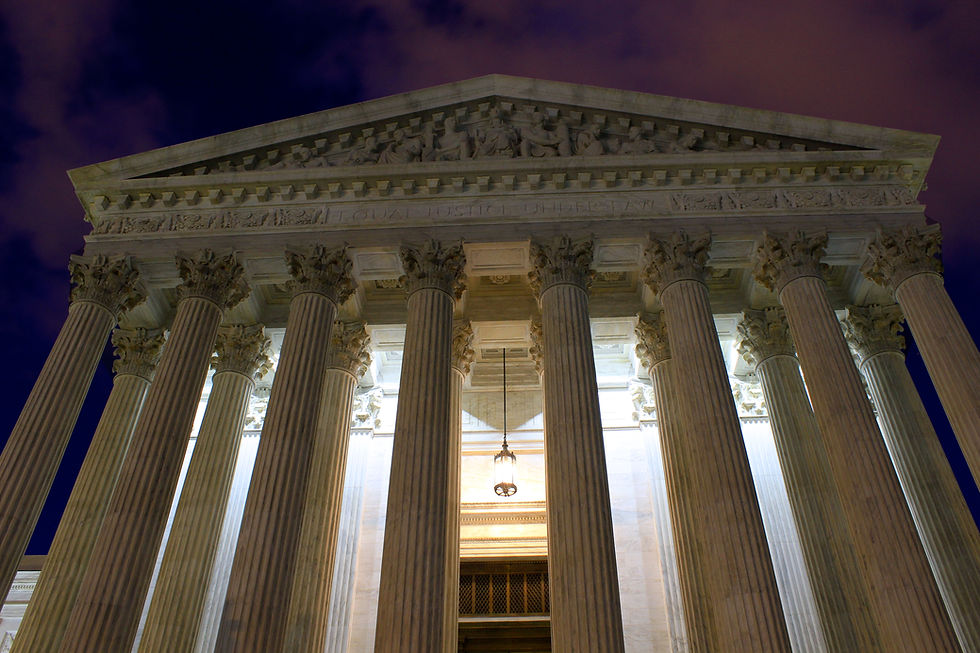Fed Cuts Rates for First Time in 2025: What Powell's Move Means for Inflation, Jobs, Politics
- Natalie Frank
- Sep 17
- 5 min read
Central bank cuts key rate by a quarter point as labor market weakens, political pressure intensifies
Natalie C. Frank, Ph.D September 17, 2025
![Armenia.eregulations.org [CC BA-SA 4.0]](https://static.wixstatic.com/media/1de624_bee109ee165646ad967444110686b14f~mv2.jpg/v1/fill/w_700,h_502,al_c,q_80,enc_avif,quality_auto/1de624_bee109ee165646ad967444110686b14f~mv2.jpg)
WASHINGTON, D.C. - The Federal Reserve broke its nine-month period of abstinence from monetary policy adjustments by lowering its benchmark interest rate for the year for the first time. The central bank's September 17 decision to lower the federal funds rate by a quarter percentage point to a range of 4% to 4.25% is a new chapter in the Fed's delicate tightrope walking between dousing inflation and calibrating a slowing economy.
This quarter-point reduction, the first since late 2024, signals what could be the start of multiple cuts before the year’s end. Fed officials hinted that two additional reductions may be on the table in the coming months. For millions of Americans, the decision could ripple through borrowing costs, mortgages, credit cards, and financial markets. For Wall Street, it represents both an opportunity and a risk. And for the political arena, it reignites debates over the Fed’s independence.
For months, policymakers resisted cutting rates, wary of re-igniting inflation that has only recently retreated from its historic highs. Inflation peaked in June 2022 at 9.1%, forcing the Fed into an aggressive campaign of rate hikes that eventually brought borrowing costs to a two-decade high of 5.25% to 5.5% in mid-2023.
The September cut followed economic figures which provided a somber snapshot. The U.S. economy generated just 22,000 new jobs in August, a dramatic drop from earlier months. Updates to earlier reports showed losses in jobs in June, the first decline since December 2020. The unemployment rate has increased to 4.3%, its highest since October 2021. At the same time, fresh figures show nearly one million fewer hires than earlier suggested over a twelve-month period, a blow to confidence in labor market resilience.
It acknowledged the changing conditions in its official statement: "Job growth has slowed, and the unemployment rate has increased but remains low. Inflation has increased and remains a little above its longer-run average.".
The action also follows a greater trade war with tariffs from President Donald Trump's administration. While tariffs have begun to push prices for consumers upward, Fed Chair Jerome Powell has insisted that they are likely a "one-time price change, not a more lingering inflationary force." But as it sits at 2.9% on all fronts and core inflation has held steady at 3.1% in August, the Fed is still in uncharted waters.
The Federal Open Market Committee (FOMC) voted for the quarter-point reduction but was not unanimous. The newly inaugurated Fed Governor Stephen Miran, nominated by President Trump and present for his first meeting, disagreed and suggested a half-point cut.
Miran, a White House Council of Economic Advisers chairman, indicated that he would take unpaid leave from his current position as chairman of the White House Council of Economic Advisers upon sitting on the Fed board. His nomination, finalized on September 15, raised eyebrows over the independence of the Fed, particularly during Trump's consistent calls for aggressive rate reductions.
Another well-known attendee at the session was Governor Lisa Cook, who has been fighting in court against Trump's attempts to remove her from office. A court of appeals permitted Cook to stay in office and use her discretion by voting on this important policy matter.
The internal split could be the beginning of additional tension in the Fed. Governors Christopher Waller and Michelle Bowman, Trump appointees, had resisted reductions this summer, and market analysts believe they could join with Miran in demanding more severe cuts over the remainder of the year.
Powell faced tough questions in his post-meeting news conference on whether Miran's arrival at the Fed undermines the independence of the central bank. He spoke cautiously.
"The committee is in agreement in working our dual mandate goals," Powell said. "We're strongly committed to our independence, and other than that, I don't have a lot to say."
His brevity expressed the sensitivity of the moment. Trump has not been subtle about wanting to overhaul the Fed board. In August, he told reporters he expected to soon have a majority of appointees who would be ready to push rates lower.
The September reduction will test Powell's authority to establish policy above politics and navigate through economic gales.
Money markets entered the meeting cautiously, Wall Street tending to include a quarter-point cut as the norm. Futures markets had suggested a 94% chance of doing so, with a small percentage leaning towards a more aggressive reduction.
The Dow Jones Industrial Average advanced 0.47% on Wednesday morning, while technology-driven Nasdaq lost 0.38% and S&P 500 decreased by 0.094%. Although both S&P 500 and Nasdaq showed mixed opening returns, both shares remain at all-time highs. This follows six consecutive sessions of gains fueled by hopes of looser monetary policy and increased interest in artificial intelligence-related companies.
Whether the rally holds depends on whether lower rates permanently prevent the economy from slipping into a downturn without preventing inflation.
The Fed's move comes amid mounting political pressure on curbing its independence. Trump repeatedly bullied the central bank, demanding faster and deeper cuts while scolding officials he perceives as being in his way. His bid to oust Lisa Cook, the first Black woman to join the Fed's board, has sparked fear of attempts to subvert the bank's independence. The administration has accused Cook of mortgage fraud, though she has not been charged and has denied any wrongdoing.
Cook's case is now a hotpoint. The action is politically charged, its critics say, aimed at giving Trump greater dominance over the Fed ahead of the 2026 election cycle. Her attendance this week at the meeting demonstrates the intensity of the stakes for governance and policy.
The Fed also released its quarterly "dot plot," a chart that reveals policymakers' interest-rate forecasts for the future. The estimates show that most officials anticipate rates to be below 4% in 2026 and beyond. For 2025, nine officials forecast 3.5% to 3.75%, one foresees 2.75% to 3%, and six anticipate 4% to 4.25%.
Economists remain split on when there will be further reductions. A survey by Bloomberg found that around 40% foresee three overall cuts this year, with the median expectation still remaining at two. They are not of the view that the second cut is in October or December.
Three cuts by year's end are market expectations, but analysts caution that numbers will guide the Fed's hand. As BMO Capital Markets chief U.S. economist Scott Anderson put it: recent readings "put the FOMC in a tight spot.".
For regular Americans, the Fed action will cut daily expenses. Lower rates tend to reduce the price of borrowing on mortgages, auto loans, and credit cards, also reducing returns on savings accounts and CDs.
For homeowners considering refinancing, the September move may be the start of cheaper deals. For businesses, cheaper borrowing will promote investment and new hiring, just what is needed in the light of recent weak jobs reports. But the full impact won't be felt for months, and the threat remains that cuts could give a boost to inflationary forces.






